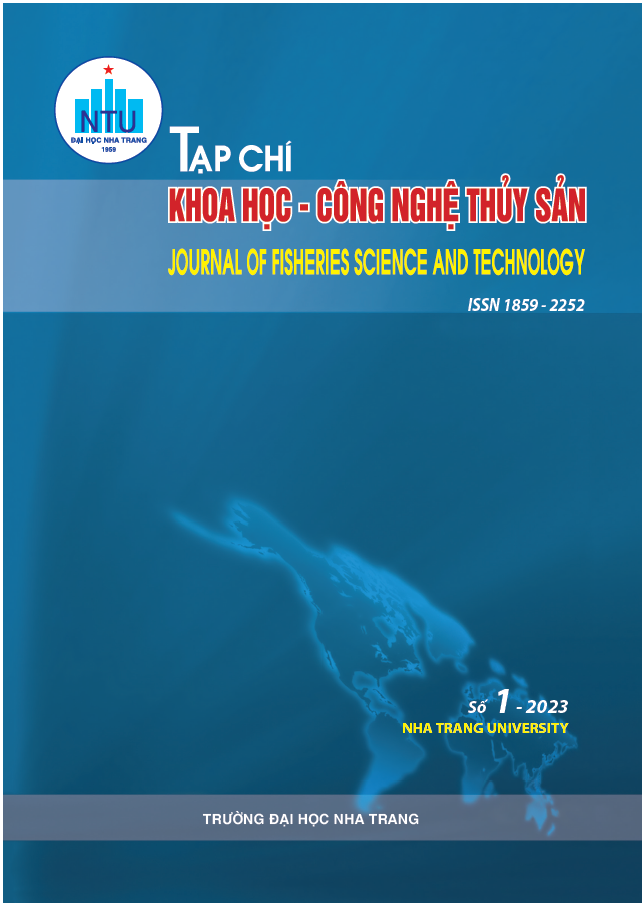##plugins.themes.huaf_theme.article.main##
Abstract
The study determined the density threshold of the causative agent of acute hepatopancreatic necrosis disease (AHPND) and the pond environment factors (biotic factors, abiotic factors) that play an important role as a basis to propose solutions to control the causative agent of AHPND in commercial white leg shrimp ponds. This study collected and analyzed water samples, white leg shrimp samples from 54 ponds with suspected AHPND and water samples, white leg shrimp samples from 76 ponds without suspected AHPND in Nam Dinh, Phu Yen and Bac Lieu provinces since June 2020 to June 2022 to compare and determine the cut-off point (threshold) of the causative agent of AHPND. Using multivariate regression and ROC (Receiver Operating Charactetistic) curve method on specialized biological statistical software SPSS to process the obtained data, the results showed that the density threshold is 1.6 × 103 cfu/g and 1.3 × 103 cfu/mL, V. parahaemolyticus carrying the pirA/pirB gene causing AHPND was the most obvious. In addition, biotic and abiotic factors, including: Vibrio spp. pond water and shrimp hepatopancreas in the order of ≥ 6.7 × 103 cfu/mL and ≥ 1.2 × 104 cfu/g; V. parahaemolyticus pond water and shrimp hepatopancreas in the order of ≥ 4.7 × 103 cfu/mL and ≥ 7.7 × 103 cfu/g; salinity ≥ 30.5‰; pH ≥ 8.15; NO2- ≥ 0.015mg/L; TSS ≥ 14.15 mg/L also had a clear and statistically significant relationship (p < 0.05), contributing to whiteleg shrimp suffering from AHPND in grow-out ponds. On the other hand, the article also pointed out solutions to control bacteria causing AHPND below threshold from the synthesis of previous research results: strict control of input quality in the rearing process; using antibacterial substances of natural origin; use specific bacteriophages; using water quality management technologies in shrimp farming; periodic use of probiotics (Bacillus spp., Lactobacillus spp.,...) in combination with non-specific immunomodulators, and finally the use of antibiotics.

